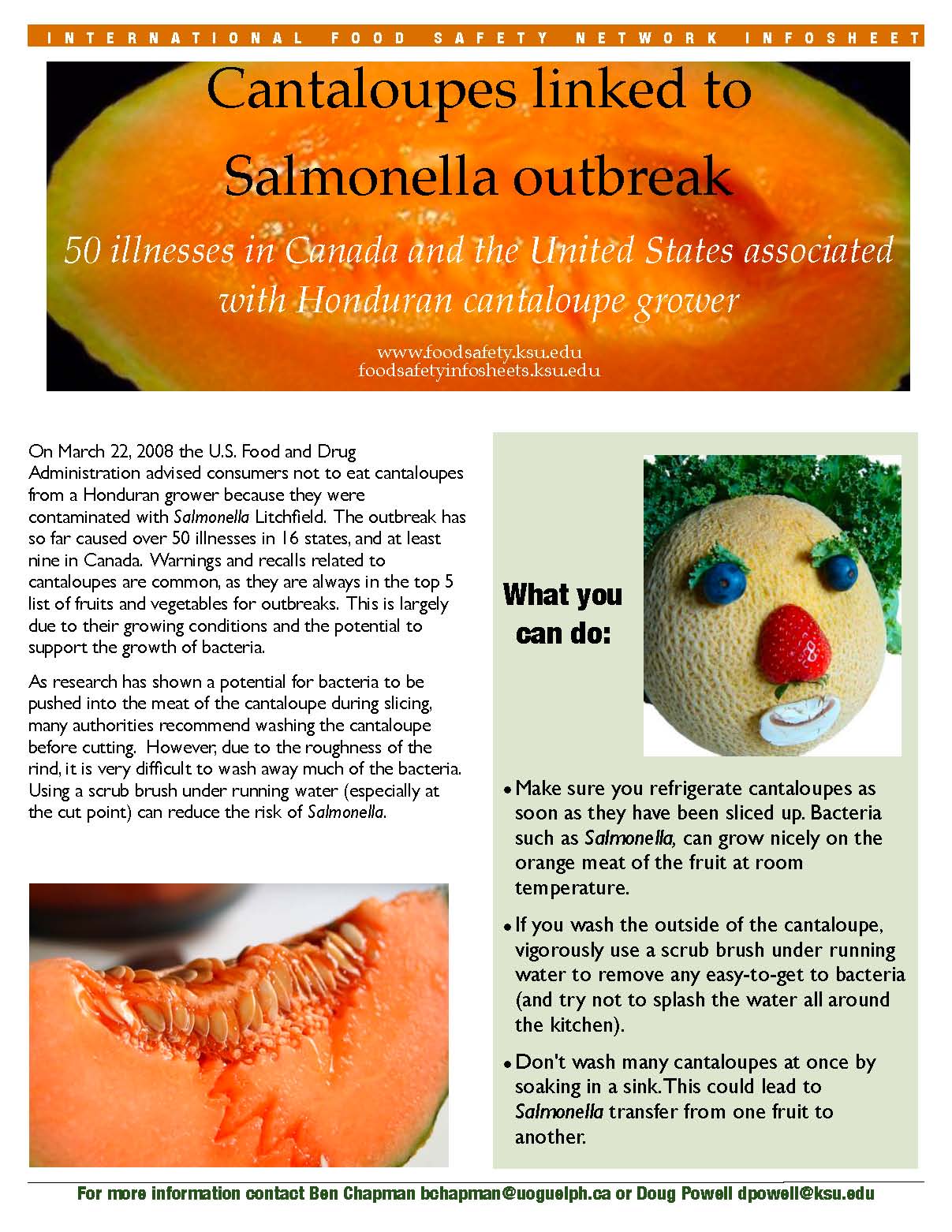Food safety and public health folks are pretty good at writing proposals, getting funds to do research, and, because of a funder’s requirement, sometimes add on an outreach throwaway activity to make something in the name of education.
Usually it is a brochure, or posters, or a website where the outputs are shared.
And they often suck.
I’m becoming more cynical as I get older and increasingly frustrated with how slow things progress. At one of my first IAFP meetings a decade ago I sat through a 3-hour session on cleaning and sanitation in processing environments and each speaker ended their talk with the same type of message – things would be better if we could just educate the staff, ritely stating it like it would be simple to in a 1-hr training session.
And no one mentioned evaluation.
There’s about 10,000 papers in the adult education, behavioral science and preventive health world that set the stage on how to actually make communication and education interventions that might work. The literature has some common tenants: know thy audience; have an objective; base your message on some sort of evidence; ground the approach in accepted theory and evaluate.
Unfortunately food safety professionals who are good at microbiology don’t usually consult it.
Young and colleagues from Canada recently published a paper in Foodborne Pathogens and Disease which provides an output of summarized packages of systematic reviews into one-and three page formats (abstract below).
The application of systematic reviews is increasing in the agri-food public health sector to investigate the efficacy of policy-relevant interventions. In order to enhance the uptake and utility of these reviews for decision-making, there is a need to develop summary formats that are written in plain language and incorporate supporting contextual information. The objectives of this study were (1) to develop a guideline for summarizing systematic reviews in one- and three-page formats, and (2) to apply the guideline on two published systematic reviews that investigated the efficacy of vaccination and targeted feed and water additives to reduce Salmonella colonization in broiler chickens. Both summary formats highlight the key systematic review results and im- plications in plain language. Three-page summaries also incorporated four categories of contextual information (cost, availability, practicality, and other stakeholder considerations) to complement the systematic review findings. We collected contextual information through structured rapid reviews of the peer-reviewed and gray literature and by conducting interviews with 12 topic specialists. The overall utility of the literature searches and interviews depended on the specific intervention topic and contextual category. In general, interviews with topic specialists were the most useful and efficient method of gathering contextual information. Preliminary evaluation with five end-users indicated positive feedback on the summary formats. We estimate that one-page summaries could be developed by trained science-to-policy professionals in 3–5 days, while three-page summaries would require additional resources and time (e.g., 2–4 weeks). Therefore, one-page summaries are more suited for routine development, while three-page summaries could be developed for a more limited number of high-priority reviews. The summary guideline offers a structured and transparent approach to support the utilization of systematic reviews in decision-making in this sector. Future research is necessary to evaluate the utility of these summary formats for a variety of end-users in different contexts.
While there’s a whole lot of information on how these summaries were designed – and that eight end-users were asked to participate in the development, there’s no mention of behavioral or education theory, why message and design choices were made or what they hoped the end users would do with them. And no evaluation at all.
Here’s how we’ve evaluated our food safety infosheets for a different user group, food handlers:
Assessment of Food Safety Practices of Food Service Food Handlers: Testing a Communication Intervention
June 2010, Journal of Food Protection
Abstract: Globally, foodborne illness affects an estimated 30% of individuals annually. Meals prepared outside of the home are a risk factor for acquiring foodborne illness and have been implicated in up to 70% of traced outbreaks. The Centers for Disease Control and Prevention has called on food safety communicators to design new methods and messages aimed at increasing food safety risk-reduction practices from farm to fork. Food safety infosheets, a novel  communication tool designed to appeal to food handlers and compel behavior change, were evaluated. Food safety infosheets were provided weekly to food handlers in working foodservice operations for 7 weeks. It was hypothesized that through the posting of food safety infosheets in highly visible locations, such as kitchen work areas and hand washing stations, that safe food handling behaviors of foodservice staff could be positively influenced. Using video observation, food handlers (n ~ 47) in eight foodservice operations were observed for a total of 348 h (pre- and postintervention combined). After the food safety infosheets were introduced, food handlers demonstrated a significant increase (6.7%, P , 0.05, 95% confidence interval) in mean hand washing attempts, and a significant reduction in indirect cross-contamination events (19.6%, P , 0.05, 95% confidence interval). Results of the research demonstrate that posting food safety infosheets is an effective intervention tool that positively influences the food safety behaviors of food handlers.
communication tool designed to appeal to food handlers and compel behavior change, were evaluated. Food safety infosheets were provided weekly to food handlers in working foodservice operations for 7 weeks. It was hypothesized that through the posting of food safety infosheets in highly visible locations, such as kitchen work areas and hand washing stations, that safe food handling behaviors of foodservice staff could be positively influenced. Using video observation, food handlers (n ~ 47) in eight foodservice operations were observed for a total of 348 h (pre- and postintervention combined). After the food safety infosheets were introduced, food handlers demonstrated a significant increase (6.7%, P , 0.05, 95% confidence interval) in mean hand washing attempts, and a significant reduction in indirect cross-contamination events (19.6%, P , 0.05, 95% confidence interval). Results of the research demonstrate that posting food safety infosheets is an effective intervention tool that positively influences the food safety behaviors of food handlers.
 The importance of training food handlers is critical to effective food hygiene; however, there have been limited studies on the effectiveness of such training.
The importance of training food handlers is critical to effective food hygiene; however, there have been limited studies on the effectiveness of such training.


 communication tool designed to appeal to food handlers and compel behavior change, were evaluated. Food safety infosheets were provided weekly to food handlers in working foodservice operations for 7 weeks. It was hypothesized that through the posting of food safety infosheets in highly visible locations, such as kitchen work areas and hand washing stations, that safe food handling behaviors of foodservice staff could be positively influenced. Using video observation, food handlers (n ~ 47) in eight foodservice operations were observed for a total of 348 h (pre- and postintervention combined). After the food safety infosheets were introduced, food handlers demonstrated a significant increase (6.7%, P , 0.05, 95% confidence interval) in mean hand washing attempts, and a significant reduction in indirect cross-contamination events (19.6%, P , 0.05, 95% confidence interval). Results of the research demonstrate that posting food safety infosheets is an effective intervention tool that positively influences the food safety behaviors of food handlers.
communication tool designed to appeal to food handlers and compel behavior change, were evaluated. Food safety infosheets were provided weekly to food handlers in working foodservice operations for 7 weeks. It was hypothesized that through the posting of food safety infosheets in highly visible locations, such as kitchen work areas and hand washing stations, that safe food handling behaviors of foodservice staff could be positively influenced. Using video observation, food handlers (n ~ 47) in eight foodservice operations were observed for a total of 348 h (pre- and postintervention combined). After the food safety infosheets were introduced, food handlers demonstrated a significant increase (6.7%, P , 0.05, 95% confidence interval) in mean hand washing attempts, and a significant reduction in indirect cross-contamination events (19.6%, P , 0.05, 95% confidence interval). Results of the research demonstrate that posting food safety infosheets is an effective intervention tool that positively influences the food safety behaviors of food handlers.  maybe we should look at what works and what doesn’t.
maybe we should look at what works and what doesn’t. I don’t know if it works so I asked Chapman. He said the video doesn’t spend enough time on deli meats, the food that risk assessments have shown was much riskier than others. He also said it’s not bad, but somewhat patronizing, but he’s also not a pregnant woman.
I don’t know if it works so I asked Chapman. He said the video doesn’t spend enough time on deli meats, the food that risk assessments have shown was much riskier than others. He also said it’s not bad, but somewhat patronizing, but he’s also not a pregnant woman. But is there a better way to deliver food safety information by distance? And who better to answer that question than a food safety distance education person who wants to get an advanced degree?
But is there a better way to deliver food safety information by distance? And who better to answer that question than a food safety distance education person who wants to get an advanced degree? French in the Battle of Puebla (yesterday) or a song by the band, Cake. It was also a day to celebrate the launch of the World Health Organization’s (WHO) newest hand hygiene campaign:
French in the Battle of Puebla (yesterday) or a song by the band, Cake. It was also a day to celebrate the launch of the World Health Organization’s (WHO) newest hand hygiene campaign:  To help support this initiative, WHO has accompanied the promotion with a variety of tools and resources to aid healthcare facilities in promoting and enforcing better hand hygiene. These tools include: tools for system change, tools for training and education, tools for evaluation and feedback, tools as reminders in the workplace, and tools for institutional safety climate. My personal favorite, mostly because of the fun diagram, is in the “
To help support this initiative, WHO has accompanied the promotion with a variety of tools and resources to aid healthcare facilities in promoting and enforcing better hand hygiene. These tools include: tools for system change, tools for training and education, tools for evaluation and feedback, tools as reminders in the workplace, and tools for institutional safety climate. My personal favorite, mostly because of the fun diagram, is in the “